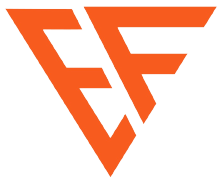
Web development frameworks are the key to developing efficient websites in the ever-changing digital environment. It is important to keep up with the latest trends and developments in this area as the year 2024 progresses. In this article, we will explore the best web development frameworks for the year 2024 and delve into their pros and cons.
From the more established React and Angular to the new kid on the block, Vue. js and Laravel, we will offer an in-depth comparison of their strengths and weaknesses. This guide will be useful for both experienced web developers and businessmen who want to hire a web developer.
Keep reading to compare the performance, scalability, usability, community support, and other critical features that set these frameworks apart. After reading this article, you will be able to identify which framework is most suitable for your unique requirements and objectives.
Welcome to the journey of the top web development frameworks of 2024 with us!
Importance of choosing the right web development framework
It is important to consider the web development framework when deciding on the development of your website or web application. An appropriate framework will help you to find the appropriate resources and technologies that you need in order to create the desired quality digital product.
The type of web development framework that you select will affect your project in many ways such as performance, scalability, usability, and popularity. These factors need to be assessed and should be looked at in relation to your requirements and aims. Choosing the best framework will help you save time and money, improve user experience, and assist you in developing a robust application that will withstand the test of time.
Top web development frameworks in 2024
1. AngularJS
AngularJS, developed and maintained by Google, is a widely popular framework known for its powerful features and extensive community support. Its popularity stems from its ability to build dynamic single-page applications (SPAs) with ease. AngularJS follows the MVC (Model-View-Controller) architecture, which allows for a clear separation of concerns and enhances code maintainability.
Pros:
- AngularJS offers a comprehensive set of features out of the box, including two-way data binding, dependency injection, and directives, which simplify development and reduce the need for external libraries.
- It has a large and active community that provides extensive documentation, tutorials, and resources, making it easy for developers to learn and troubleshoot.
- AngularJS has excellent performance and scalability, making it suitable for large-scale applications with complex data manipulation and real-time updates.
Cons:
- The learning curve for AngularJS can be steep, especially for beginners. Its complex architecture and numerous concepts may require additional time and effort to grasp fully.
- AngularJS applications can be heavy in terms of file size and load time, especially if not optimized properly. This can negatively impact the user experience, particularly on mobile devices with slower internet connections.
- As AngularJS is a mature framework, the learning resources and community support might shift towards newer frameworks, making it challenging to find up-to-date information and solutions for specific issues.
2. ReactJS
ReactJS, developed by Facebook, has gained significant popularity in recent years due to its simplicity, reusability, and performance. It is a JavaScript library rather than a full-fledged framework, but it provides developers with the necessary tools to build dynamic and interactive user interfaces efficiently.
Pros:
- ReactJS follows a component-based architecture, which promotes reusability and modularity. This allows developers to create reusable UI components that can be easily combined to build complex interfaces.
- It has a virtual DOM (Document Object Model) which optimizes rendering and improves performance by reducing the number of actual DOM manipulations.
- ReactJS has a large and active community that constantly contributes to the ecosystem with new libraries, tools, and best practices, ensuring that developers have access to the latest advancements.
Cons:
- ReactJS focuses primarily on the view layer, which means that developers need to rely on external libraries or frameworks to handle other aspects such as routing and state management.
- The learning curve for ReactJS can be steep for beginners, especially if they are not familiar with concepts like JSX (JavaScript XML) and functional programming.
- ReactJS lacks official guidelines or conventions, which can lead to inconsistency in code structure and organization across different projects. This may require additional effort to maintain code quality and ensure consistency within a team.
3. Vue.js
Vue.js, often referred to as the “progressive framework,” is gaining popularity for its simplicity, flexibility, and ease of integration. It is designed to be incrementally adoptable, allowing developers to gradually introduce it into existing projects or use it as a standalone framework for new projects.
Pros:
- Vue.js has a gentle learning curve, making it accessible to beginners and developers transitioning from other frameworks. Its beginner-friendly documentation and clear syntax contribute to its ease of use.
- It offers a flexible and scalable architecture, allowing developers to choose the level of complexity they need for their project. This makes Vue.js suitable for both small and large-scale applications.
- Vue.js has excellent performance due to its efficient rendering mechanism and optimized reactivity system. It ensures minimal overhead and fast updates, enhancing the user experience.
Cons:
- Vue.js, compared to AngularJS and ReactJS, has a smaller community and ecosystem. While it is growing rapidly, finding specific solutions or libraries for unique requirements might be more challenging.
- It may lack some advanced features or more opinionated structures found in other frameworks. This can lead to additional development effort in implementing certain functionalities not available out of the box.
- Vue.js may not be suitable for enterprise-level projects with complex requirements and large development teams as it might lack the extensive tooling and support necessary for such scenarios.
4. Django
Django, a high-level Python web framework, is known for its simplicity, security, and scalability. It follows the “batteries included” philosophy, providing developers with a wide range of features and tools to build robust web applications efficiently.
Pros:
- Django’s batteries included approach means that it comes with various built-in features, such as authentication, database ORM (Object-Relational Mapping), and URL routing. This reduces the need for additional libraries and simplifies the development process.
- It has a secure design and provides built-in protection against common web vulnerabilities. Django’s emphasis on security makes it a popular choice for applications that handle sensitive user data.
- Django has a large and active community, ensuring that developers have access to extensive documentation, tutorials, and support. This makes it easy to find solutions for common issues and stay updated with the latest best practices.
Cons:
- Django’s learning curve can be steep for beginners, especially if they are not familiar with Python. Its extensive features and conventions may require additional time and effort to grasp fully.
- It follows a monolithic architecture, which can limit flexibility and modularity compared to more lightweight frameworks. This might be a concern for projects that require a high level of customization or integration with existing systems.
- Django’s performance, while generally good, may not be as high as more specialized frameworks for certain use cases. It is important to carefully evaluate performance requirements before choosing Django for performance-critical applications.
5. Laravel
Laravel, a PHP web framework, has gained significant popularity for its elegant syntax, expressive syntax, and extensive ecosystem. It follows the MVC (Model-View-Controller) architecture and provides developers with a clean and intuitive syntax that enhances productivity and code maintainability.
Pros:
- Laravel comes with a wide range of built-in features, such as routing, caching, and authentication, which streamline development and reduce the need for external libraries. This allows developers to focus on business logic rather than reinventing the wheel.
- It has a clean and expressive syntax that promotes readable and maintainable code. Laravel’s elegant syntax makes it easy for developers to understand and work with both on individual and team projects.
- Laravel has a large and active community that contributes to its ecosystem with various libraries, packages, and extensions. This ensures that developers have access to a wide range of resources and solutions for their projects.
Cons:
- Laravel’s performance, while generally good, may not be as high as more specialized frameworks for certain use cases. It is important to carefully evaluate performance requirements before choosing Laravel for performance-critical applications.
- It heavily relies on magic methods and behind-the-scenes abstractions, which can sometimes make it challenging to understand the underlying mechanisms and troubleshoot issues.
- Laravel’s documentation, while comprehensive, may lack in-depth explanations for some advanced features or scenarios. This might require additional research or reliance on community resources to fully grasp certain concepts.
6. Ruby on Rails
Ruby on Rails, often referred to as Rails, is a popular web application framework written in Ruby. It follows the convention-over-configuration principle, providing developers with sensible defaults and reducing the need for manual configuration.
Pros:
- Rails follows a convention-over-configuration approach, which promotes consistency and reduces the need for manual configuration. This allows developers to focus on business logic rather than spending time on repetitive tasks.
- It has a strong emphasis on developer productivity, offering features like scaffolding and code generation, which accelerate the development process. This makes Rails an excellent choice for rapid prototyping and iterative development.
- Rails has a vibrant and active community that contributes to its ecosystem with various gems (Ruby libraries) and plugins. This ensures that developers have access to a wide range of tools and resources to enhance their projects.
Cons:
- Rails, being a full-stack framework, may feel heavy for smaller or more specialized projects that do not require all of its integrated features. This might lead to unnecessary overhead and complexity.
- It has a steeper learning curve compared to other frameworks, especially for developers who are not familiar with Ruby. The conventions and Ruby-specific syntax may require additional time and effort to grasp fully.
- Rails’ performance, while generally good, may not be as high as more specialized frameworks for certain use cases. It is important to carefully evaluate performance requirements before choosing Rails for performance-critical applications.
Conclusion:
Web development frameworks are becoming even more crucial with the ever-changing face of the Internet. Each framework discussed throughout this article – AngularJS, ReactJS, Vue. All technologies such as JavaScript, Django, Laravel and Ruby on Rails have their own advantages and disadvantages. When choosing your platform, it is important to take into consideration factors such as performance, scalability, ease of use, and community support.
Let’s take into consideration the individual requirements of your project, the capabilities of your development team, and the potential expansion of your app. Consider the learning curve, resource availability and support for each framework. To help you decide on the right web development framework for your project in 2024, you need to understand how to weigh the benefits and drawbacks of each framework.
Take this unique opportunity to dive deep into the fascinating world of modern web development and learn how to assess and choose the best frameworks for developing websites and web applications in the year 2024.
Emerging Freelancer understand the importance of high-quality user-friendly designs that convey the communication of your brand as well as engages the users. We have a team of highly competent design and development specialists who work together to develop websites that are SEO-friendly and responsive to the needs of your business.
